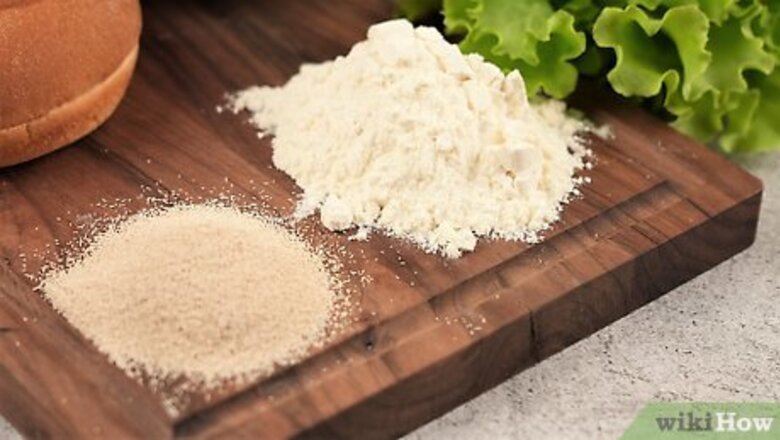
views
Preparing the Dough
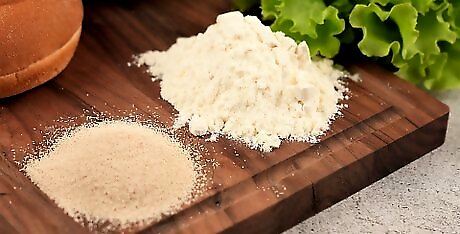
Collect your ingredients. For a basic bread, you will need 3 cups of all-purpose flour, 1 teaspoon of active dry yeast, 2 teaspoons of salt and 1 2/3 cups of warm water. These are the base ingredients, but you can add herbs to your taste. Some suitable herbs might be rosemary or thyme. For smaller loaf pans, you may need to cut this recipe in half.
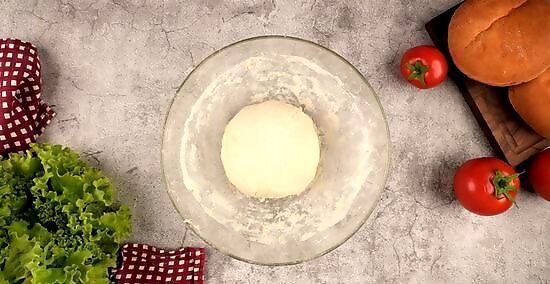
Combine your ingredients in a mixing bowl. Mix the dry ingredients together before folding in the warm water. Turn the dough until everything is fully mixed. The dough should be slightly sticky.
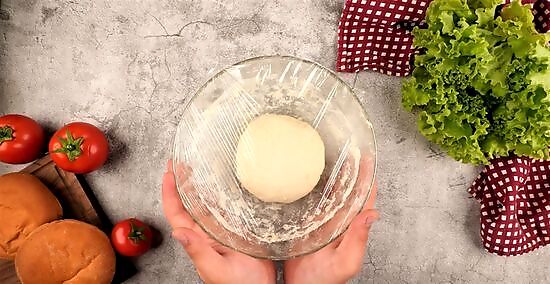
Allow the dough to rest. Cover bowl with plastic wrap and leave it on the countertop for 18-24 hours. The yeast will allow the dough to rise during this time. It may also create visible bubbles on the surface of the dough.
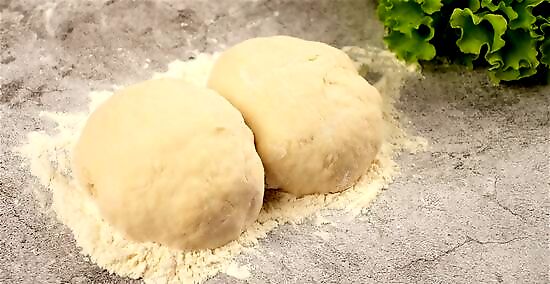
Finish the dough. Remove it from the bowl and place it on a floured surface. Fold the ball of dough in half, then tuck the edges underneath. Pushing and folding releases the air in the dough and relaxes the gluten that is needed for the bread to keep its shape. Wrap this dough in a floured kitchen towel and allow it to rise for another 2 hours until you can poke your finger in about an inch and the dough bounces back.
Baking the Bread on the Stovetop
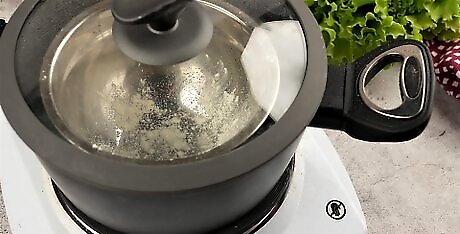
Preheat the dutch oven. Place the dutch oven on your largest burner. Put the thermal ballast in the bottom of the pot and cover it with both lids. Turn the burner on high heat. Allow the heat to rise within the oven for 5 minutes. After five minutes, reduce the heat to just above medium.
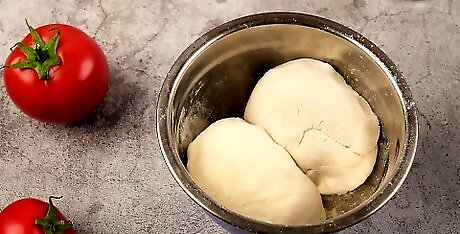
Place the dough in your floured baking pan. You want to flour all parts of the inside of the pan. It is helpful to rub oil or lard on the inside for the flour to stick to, then pour the flour in, turn and shake the pan until it is completely covered on the inside. The dough should fit well in the pan. The dough will rise more during baking, so it should not exceed the top of the pan. Another option to covering the pan with flour is using oatmeal. Pour oil in the pan covering the bottom and sides, then pour finely ground oatmeal in the pan. Twisting your wrist, be sure to turn and shake the pan until all the sides are also covered in oatmeal.
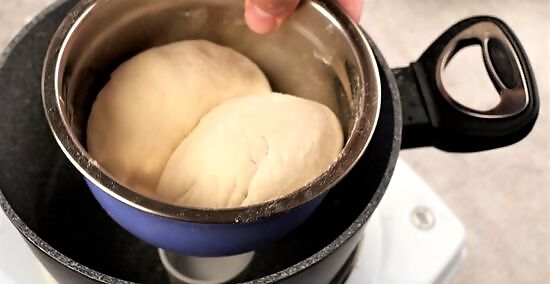
Place the pan inside your dutch oven. Using an oven mitt, remove the lids of the dutch oven and set them aside on a heat-proof surface. Carefully place your loaf pan in the center of the dutch oven, avoiding the hot sides. Make sure there is enough room on all sides of the pan for heat to surround it.
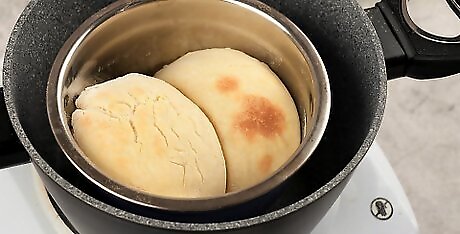
Bake the bread. Using oven mitts, place both of the lids back on top of the dutch oven. Bake the bread for about 30 minutes. Check it after 20 minutes to see if it seems to be gaining a crust. The top of the bread will not brown, but it should no longer be soft and doughy once it is cooked.
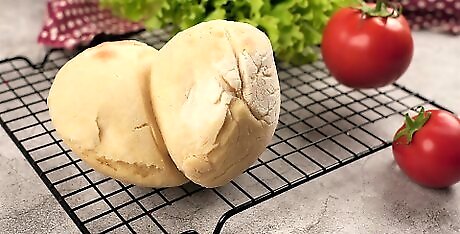
Place the bread on a cooling rack. Remove the lids and the pan from the dutch oven using oven mitts. Carefully shake the bread out of the pan. It should fall out easily because you floured your pan. The bottom of the bread will be significantly more cooked than the top. If you don’t have a cooling rack, you can cool the bread on another heat-proof surface like a plate.
Baking Flatbread in a Skillet
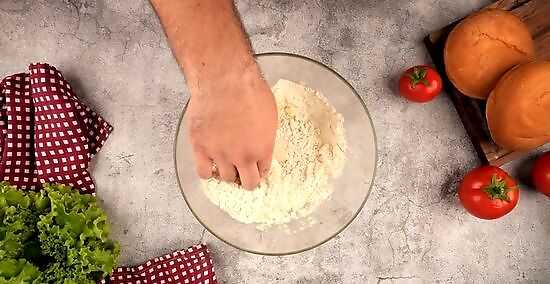
Make the dough. Stir 2 1/4 teaspoons of instant yeast and 2 teaspoons of sugar into 3/4 cup of warm water. Let this sit for 5 minutes, while you pour 2 cups of all-purpose flour and 1 teaspoon of salt in a large mixing bowl. Pour the other ingredients and 1 tablespoon of olive oil into the mixing bowl and mix thoroughly until there are no dry spots and the dough is sticky.
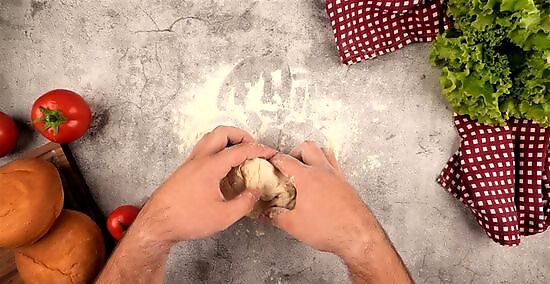
Finish the dough. Move the dough from the bowl to a flat, floured surface and knead it for 10 minutes. Oil the bowl so the dough doesn’t stick and put the dough back into the bowl. Cover the bowl and allow the dough to rest for 30 minutes.
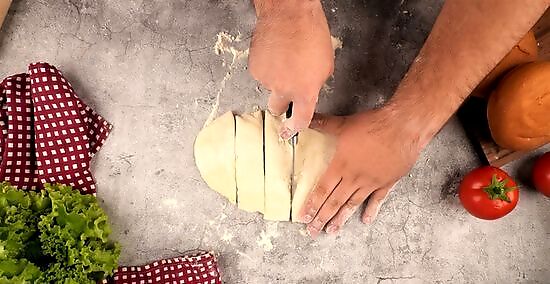
Shape the dough. Break the dough into 6 pieces. Roll each piece into a ball in the palm of your hand, then place it on a floured surface. Using a rolling pin, roll the dough into a circle. It should be about 8 inches wide.
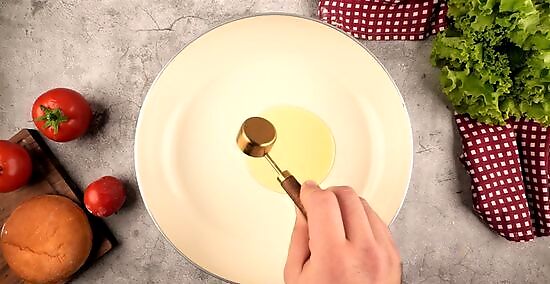
Prepare your pan. Heat a skillet on the stove top. Set the heat to medium-high and allow the skillet to warm. A cast iron skillet would work best for dispersing the heat. If you don’t own a cast iron skillet, you can use any pan. Coat the bottom of the pan with oil or butter.
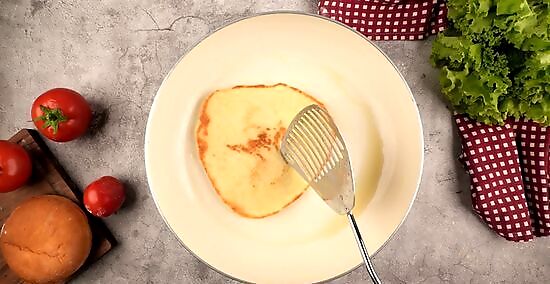
Bake the flatbread. Place one circle of the dough in the pan and bake for 30 seconds. Use a spatula to flip the bread. Cook the other side for 1.5 minutes, then flip again and cook the original side for another 1.5 minutes. Set the baked flatbread aside in a kitchen towel while you repeat this process with the other 5 circles of dough. The bread should puff up while it is baking. You want each side to have little brown spots cooked into them.
Creating a Dutch Oven
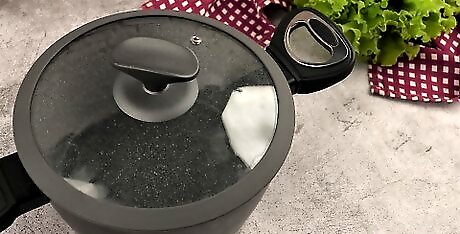
Start with a large pot. The heavier the material, the better. You will be cooking dry, so cast iron is preferable. If you choose to use something lighter, like aluminum, consider using this pot only for baking on the stovetop, since the bottom will likely become slightly burnt. Most dutch ovens are between 5-7 quarts and will be large enough for baking bread.
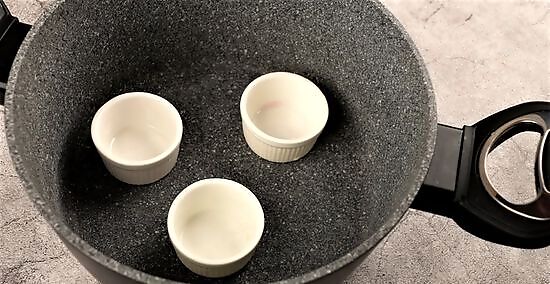
Create a thermal ballast. Place something in the bottom and center of the pot. This will become the base where your bread pan will rest, and allow for air to move around the pan. It also keeps the pan from sitting directly on the heat to reduce the amount of burn on the bottom of the loaf. Try using some broken pieces of thick tile. Flat, or smallish round stones would work as well. Another option is re-purposing an empty tuna can. Make sure that the paper is removed and place it in the bottom of the pot.
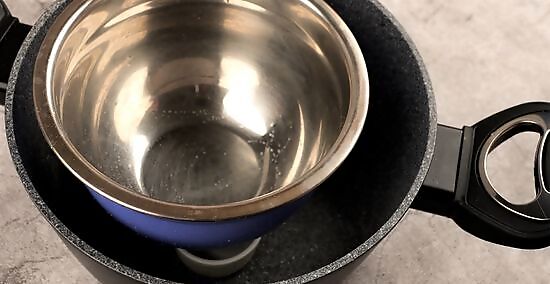
Find a bread pan to fit inside your pot. You may use a Pyrex bowl or equivalent (not ordinary glass) bowl which can withstand the heat. Other options are a metal or ceramic bread pan. Place the pan in the pot on top of the ballast. If you are using a rectangular loaf pan, make sure that the long sides fit within your pot. The height of the pan should not exceed the rim of the pot. It should not fit too snug. You need space for air to flow all the way around the loaf pan.
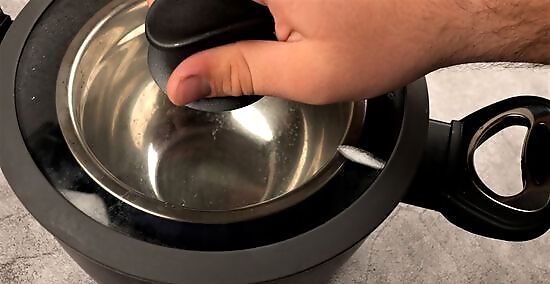
Fit a lid to your pot. This lid should have enough clearance to allow the bread pan to fit while leaving room for the bread to rise over the top of the pan. Test the lid with a bread pan in place. If you are having a difficult time finding a lid which fits, try using another pan large enough to cover the top of the pot.
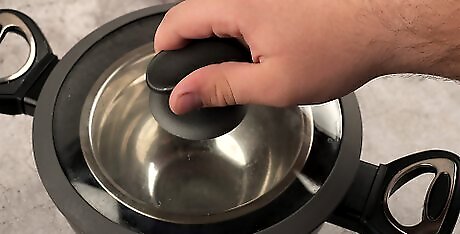
Reinforce the lid. It is important to do all you can to keep as much heat as possible inside the dutch oven. Since heat rises, it is helpful to cover the lid or pan with a second lid to force the heat back down toward the oven. If the pot lid has a steam hole in it, try to find a stainless steel bolt, washer, and nut to fit it.
Using a Haybox
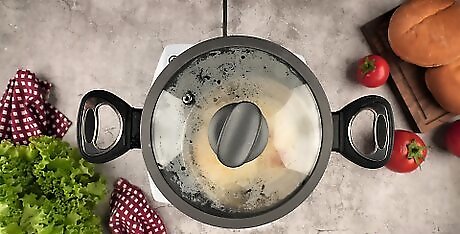
Start the baking process on the stove top. Place your dutch oven on the stovetop with the bread pan in place on your thermal ballast. Cover and heat on high for 15 minutes. Expect to have a few failed loaves which are under-cooked in the middle or over-cooked. If your equipment is different from that shown, your stove may provide more or less heat. Cooking time may need to be varied accordingly.
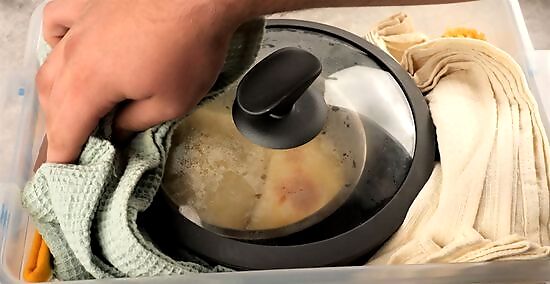
Finish baking in your own version of a haybox. The idea of baking in a haybox is that enough heat has built up in the dutch oven. Completely surrounding the dutch oven with insulation will keep the heat from escaping and allow the bread to continue to bake. Remove the dutch oven from the stove using oven mitts. Instead of finishing the bread on the stove top, carefully cover the pot with insulating materials such as blankets or sweatshirts to create a haybox. Make sure to use a durable natural fabric like cotton. Synthetic material could melt from the heat of the pot. If it is a sunny day, place the haybox in the sun for a little added warmth.
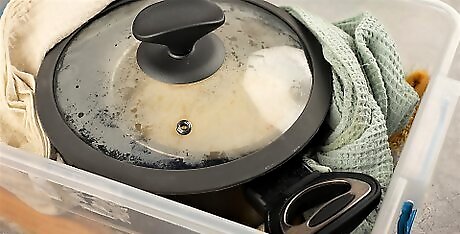
Leave the pot in the haybox for at least an hour. Three hours gives a better chance of success and cannot hurt the bread. When the time is up, or you just get too hungry to wait, uncover the pot carefully.
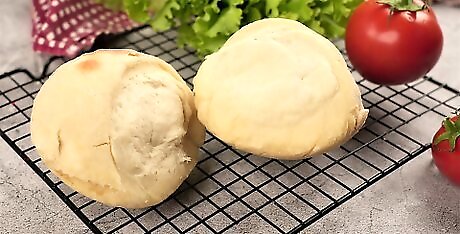
Cut open a loaf and check to see if it is done baking all the way through the center. If it's overdone and dry or burnt, or underdone and doughy in the middle, make a note of it and adjust the stove top time accordingly the next time you try baking another loaf. If it's perfect, as shown here, enjoy the rewards. You have saved up to 80% of the fuel necessary to bake the same loaf in the oven.




















Comments
0 comment